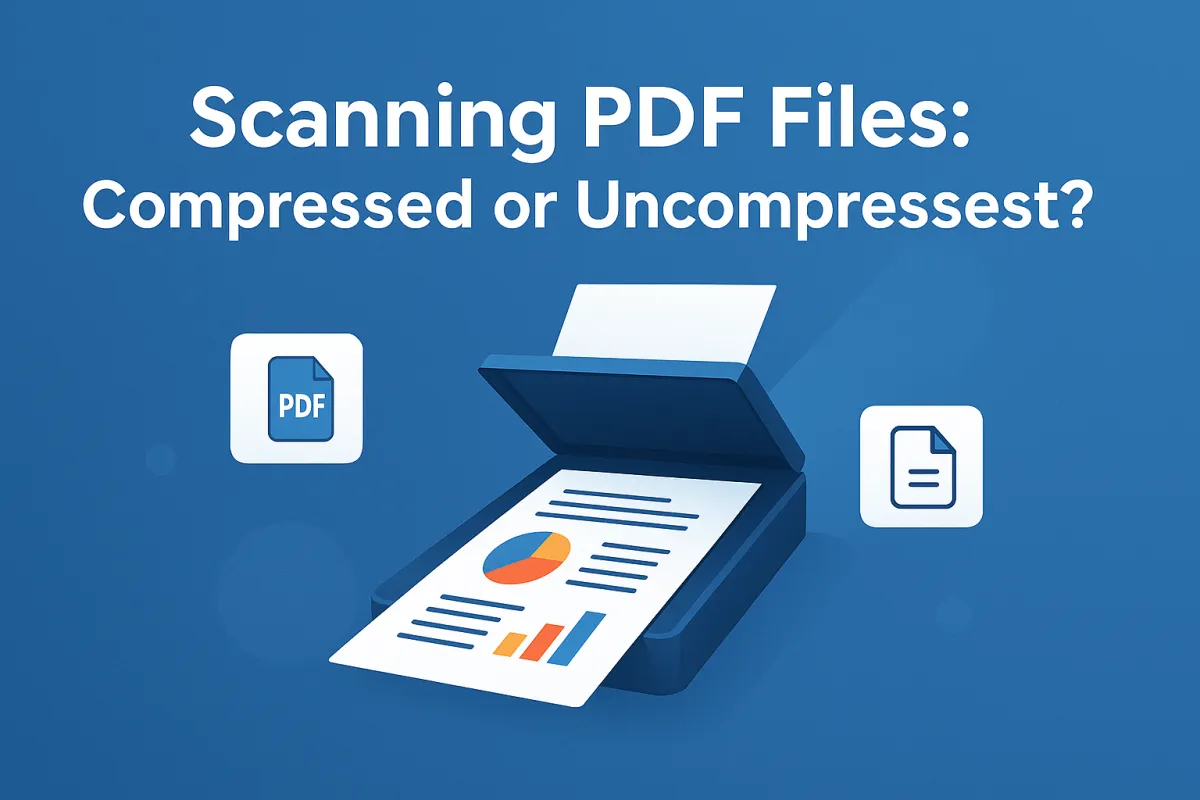
Should Scanned PDFs Be Compressed or Uncompressed? Pros, Cons, and What We Recommend
By: USA IMAGING, Inc.
When scanning documents to PDF, one key decision can have a big impact on the final product:
Should the PDF file be compressed or left uncompressed?
This isn’t just a question of file size. Compression—especially when applied during scanning—can affect image clarity, text legibility, and long-term usability. For organizations scanning legal, medical, engineering, or archival documents, these details matter more than most people realize.
What Is PDF Compression in Document Scanning?
When scanning paper to PDF, compression reduces file size by minimizing image data and optimizing how content is stored. There are two main types:
Lossless Compression – Keeps all original data while shrinking the file efficiently.
Lossy Compression – Permanently removes image detail to achieve more dramatic size reductions, but with visible tradeoffs.
Pros of Compressing Scanned PDFs
✅ Reduced File Size
Compressed scans are faster to send, download, and store—especially helpful for large document sets or bandwidth-sensitive environments.
✅ Easier Cloud Sharing
Clients using online portals, email, or mobile access benefit from smaller, quicker-loading files.
✅ Cost Savings on Storage
For clients storing millions of pages, smaller files may help reduce long-term cloud or server storage costs.
Cons of Compressing Scanned PDFs
⚠️ Noticeable Image Degradation
In our hands-on experience, compressed scanned PDFs often lose sharpness. Text edges appear jagged, color fills become blotchy, and the overall look resembles a low-DPI scan—even if it was originally scanned at high resolution.
⚠️ Loss of Detail Is Permanent
Once a scan is compressed with lossy settings, that detail is gone forever. There’s no way to “uncompress” and recover the original image quality.
⚠️ Reduced OCR Accuracy
Fuzzy or degraded scans make it harder for OCR (Optical Character Recognition) software to correctly identify text. This results in less accurate or incomplete search functions.
Pros of Uncompressed Scanned PDFs
✅ Full Image and Text Clarity
Uncompressed scans preserve the crispness of line drawings, logos, signatures, and fine print—vital for legal, engineering, and historical documents.
✅ Better for OCR and Archiving
Higher-quality images support more accurate text recognition and ensure documents remain useful for decades.
✅ Future-Proof Flexibility
With uncompressed scans, you can always apply compression later. But if you start with compressed files, you’re stuck with the reduced quality.
Cons of Uncompressed Scanned PDFs
⚠️ Larger File Size
Naturally, uncompressed scans take up more space—sometimes significantly more, especially when dealing with color or high-resolution images.
⚠️ Heavier Bandwidth Requirements
Large files can slow down uploads, downloads, and access—especially when scanning hundreds or thousands of documents at once.
Our Expert Approach at USA Imaging
At USA Imaging, we always scan to uncompressed PDF formats by default. Why?
Because preserving quality is non-negotiable. And:
You can always compress a file later. But once it’s compressed, there’s no going back.
What’s more, we use proprietary post-processing techniques that reduce file size without degrading quality or legibility—a unique value most providers simply can’t match. While others sacrifice quality to save space, we give you both.
Bottom Line: If you’re scanning documents for critical use—legal, medical, architectural, or archival—uncompressed PDFs are the safest, smartest choice. You’ll preserve full fidelity, support accurate OCR, and retain options for future compression if needed.
Need high-quality document scanning done right the first time?
Contact USA Imaging—we’ll deliver clean, sharp, and optimized PDFs that are ready for everything from audits to archives. Call us: 858-513-6565 or email: [email protected] or request a QUOTE HERE.
